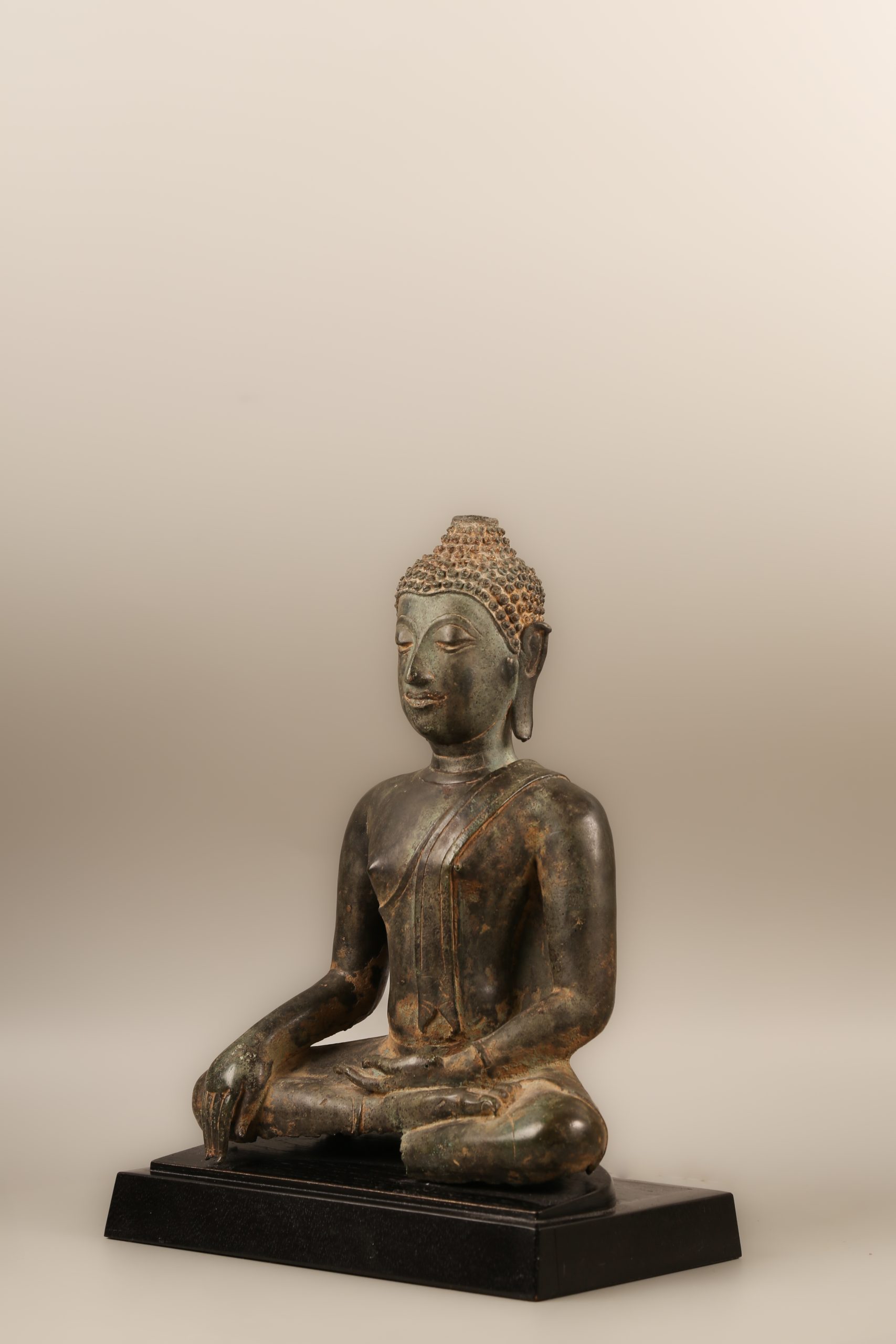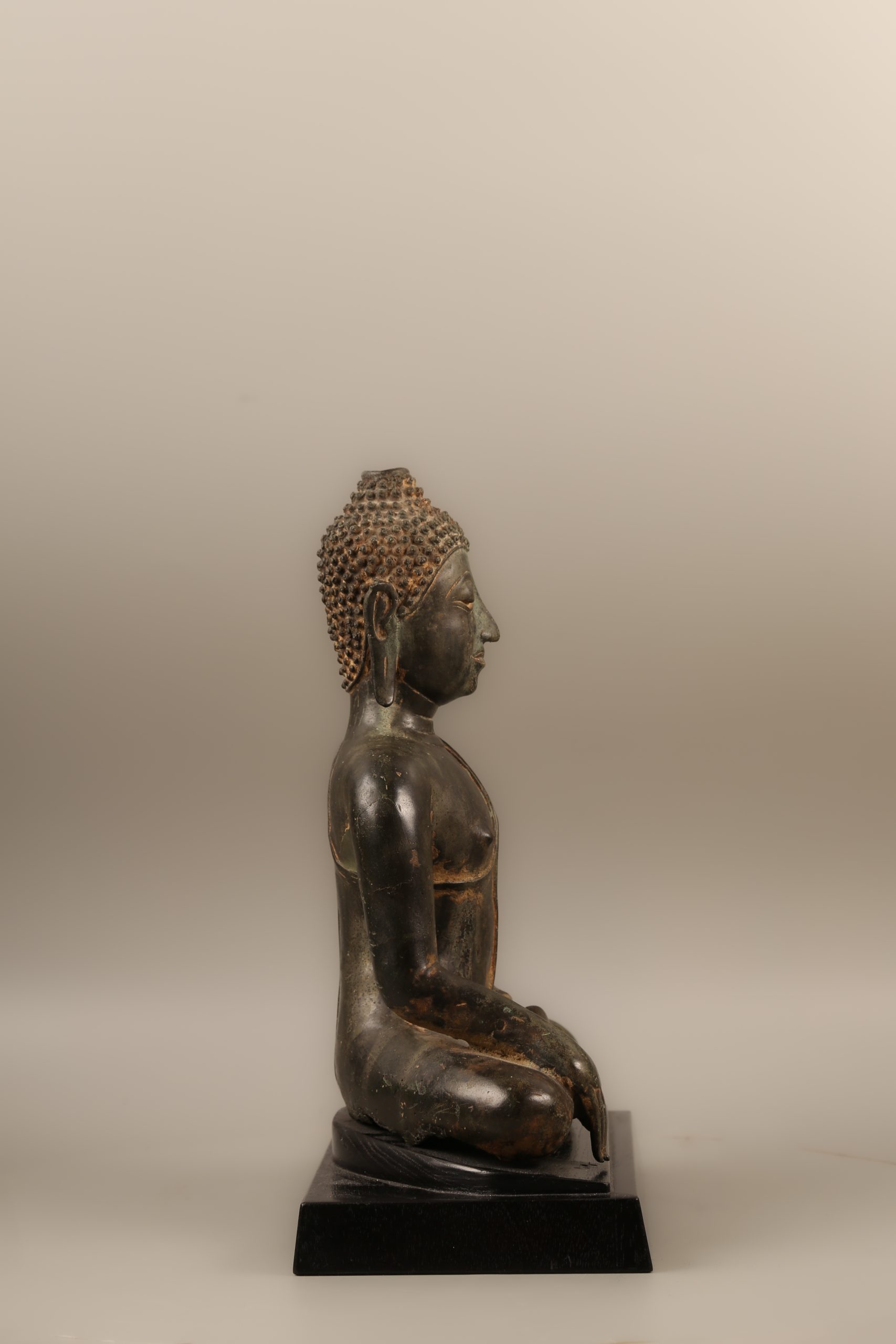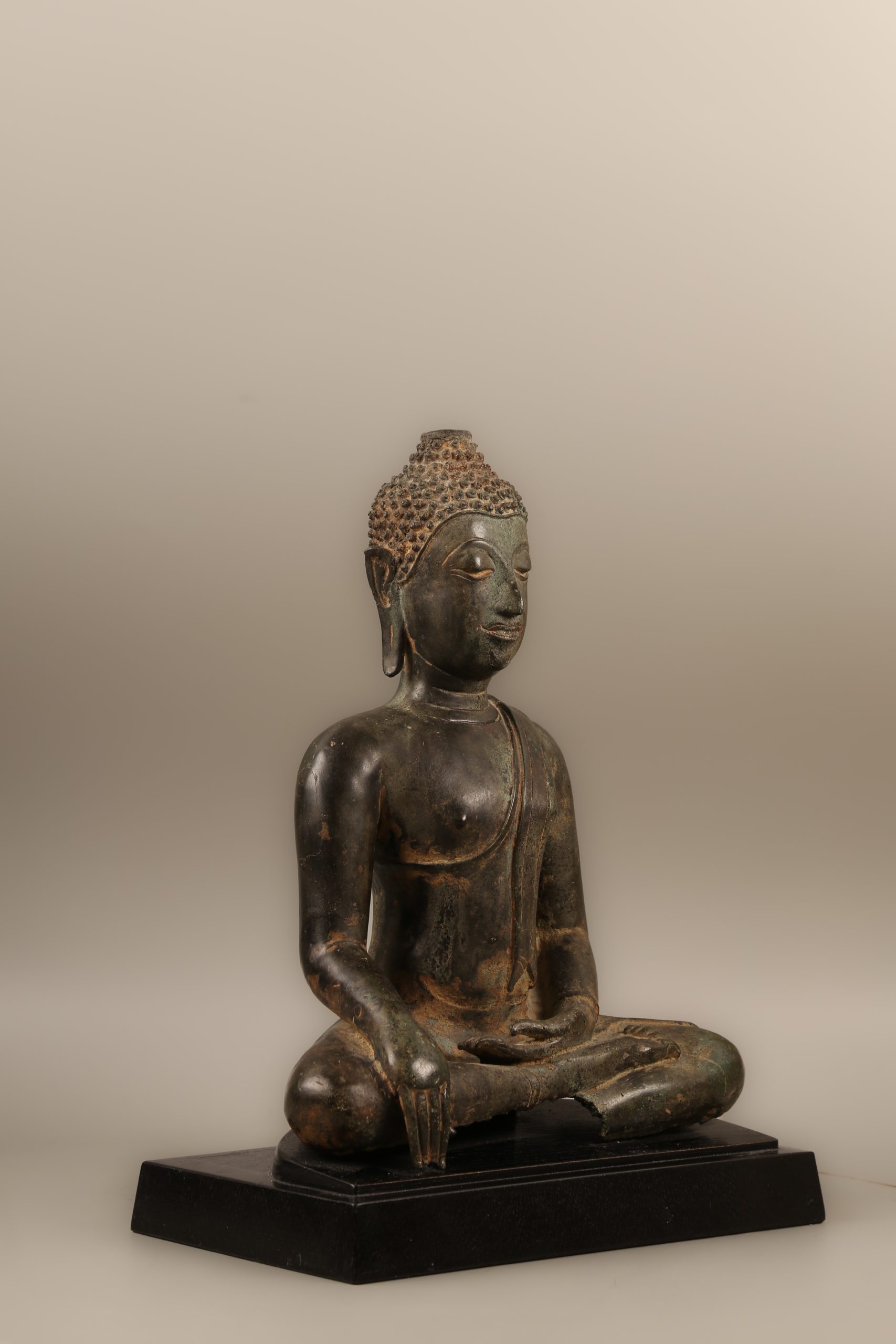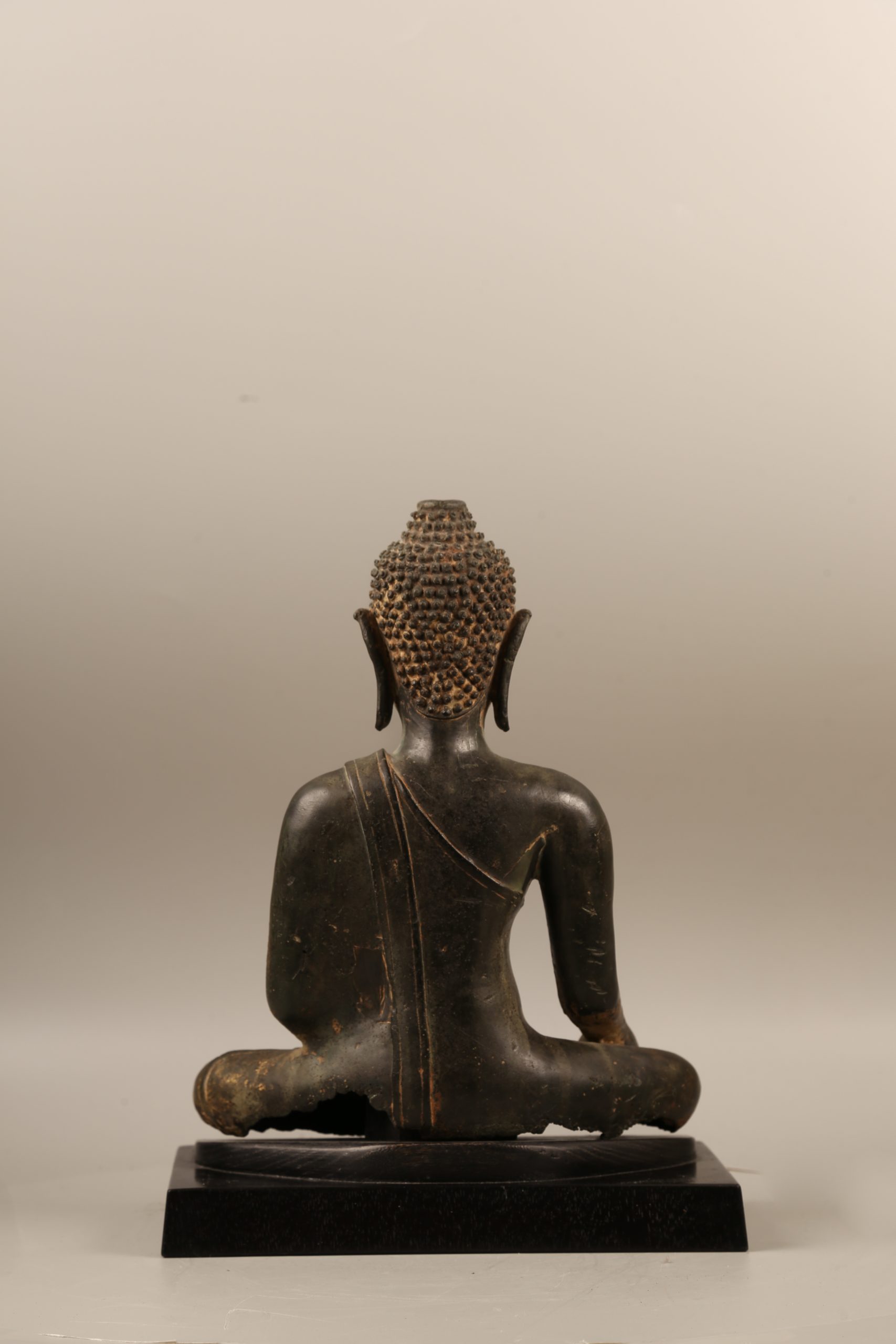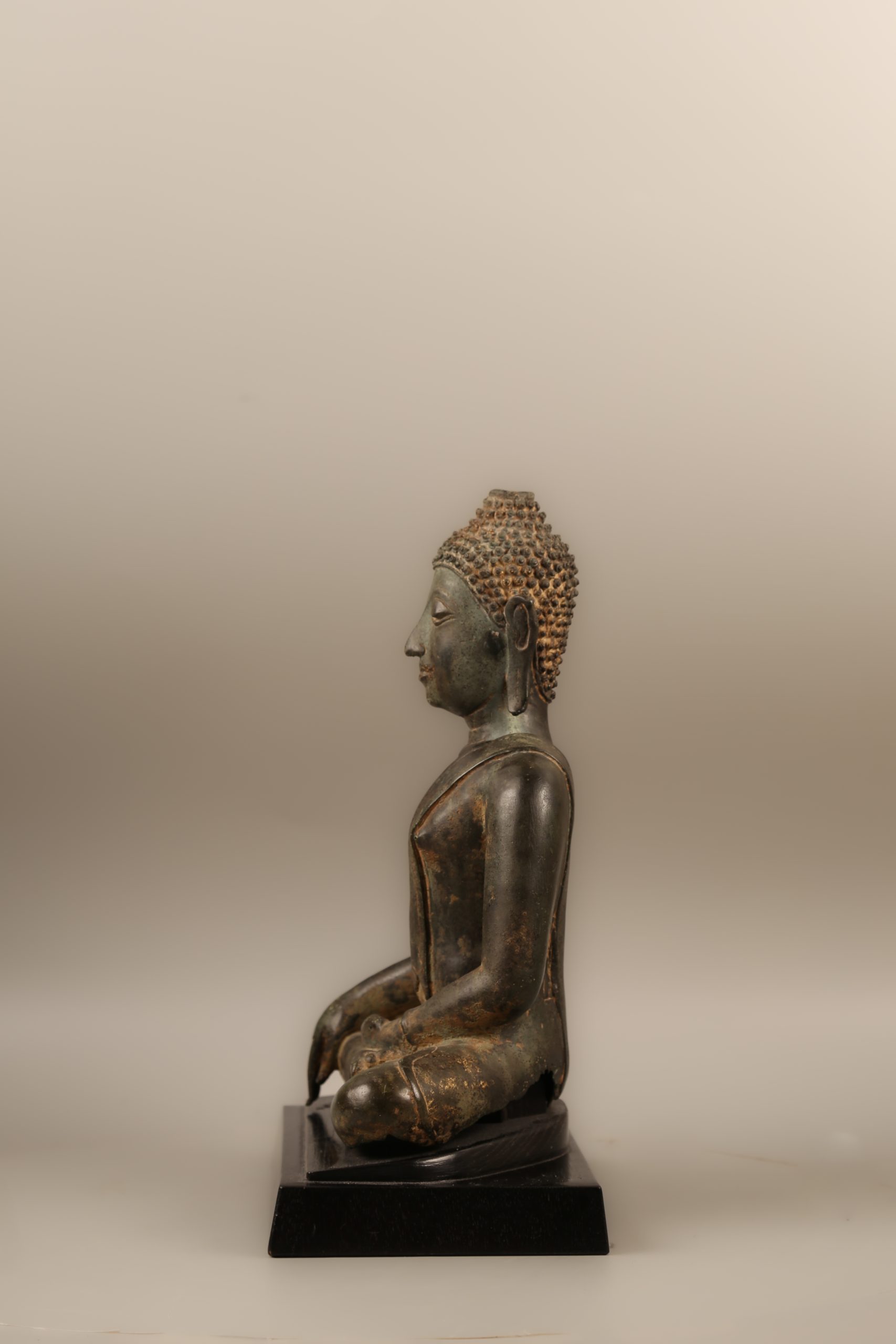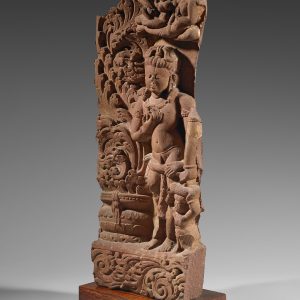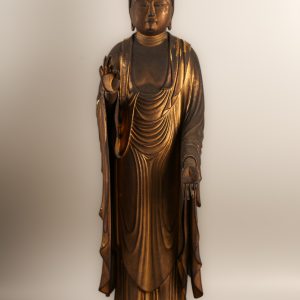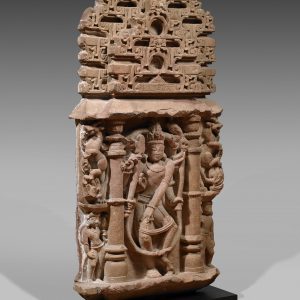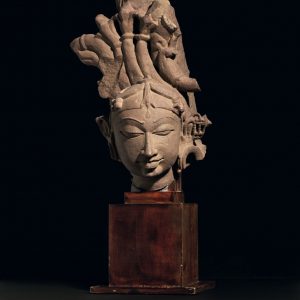Seated Buddha
15 000,00€
Bronze
Thailand
17th century, Ayutthaya period
H. 27 cm
Description
Ayutthaya was founded in 1350 by a prince of U Thong. Located fifty kilometres south of Lopburi, it was the capital of Siam for four hundred and seventeen years. Heir to the empires and kingdoms of Dvāravatῑ, Angkor, and Sukhothai, Ayutthaya developed a rich composite art, which was disseminated throughout the kingdom. This art was mainly inspired by episodes from the Buddha’s wonderful life. This bronze is a fine example.
With his right hand touching the earth, the Buddha invokes the goddess Sthavara to bear witness to his enlightenment under the Bodhi tree. This is the bhumisparsha mudra, known as the ‘witness of the earth’ mudra. His left hand is drawing the dhyana, the mudra of concentration on the Law and the attainment of spiritual perfection. It was in this posture that Sakyamuni overcame the onslaught of the demon Mara.
This Buddha corresponds to the Sukhothai style, whose characteristics are revealed by a stylised anatomy with harmonious forms. Broad shoulders give rise to round, firm arms, while the hands have long, delicate fingers. The uṣṇīṣa is covered with a hairstyle made of small curls. On an oval face, the incised features of the large, fine eyebrows extend to the busted nose. The lobes of her ears are elongated because of the heavy earrings that the prince removed at the time of the Great Departure. Buddhas of this type usually carry a flame above their cranial protuberance. This one has lost his.
The body is covered by a Sanghati robe worn diagonally over the left shoulder, with a flap reaching down to the navel and marked by an indentation.
Provenance: former Cartier collection (by repute).

